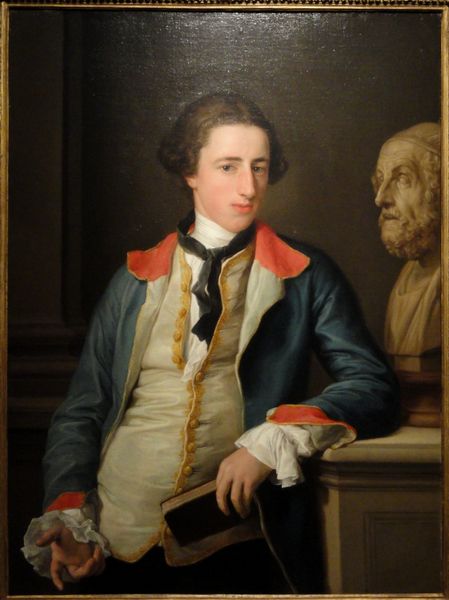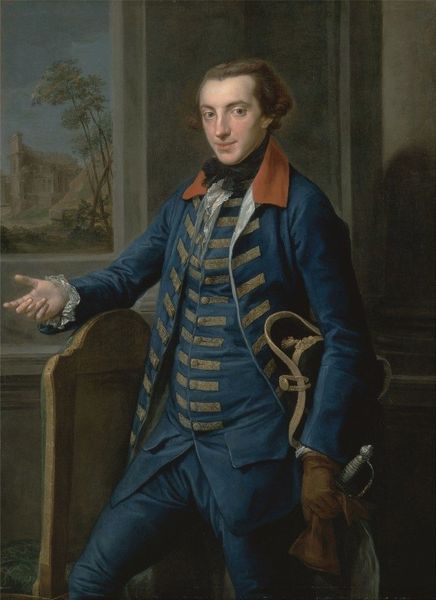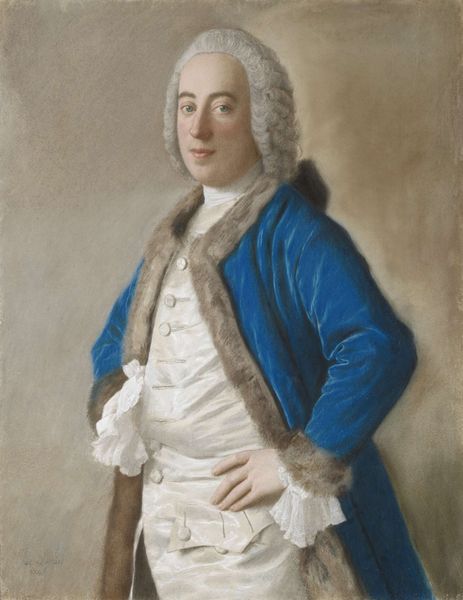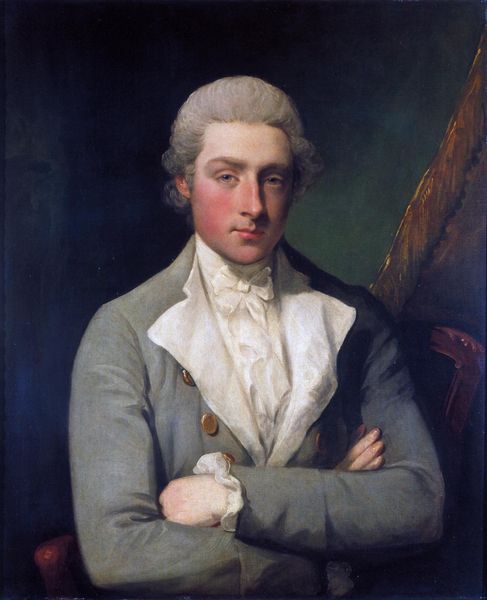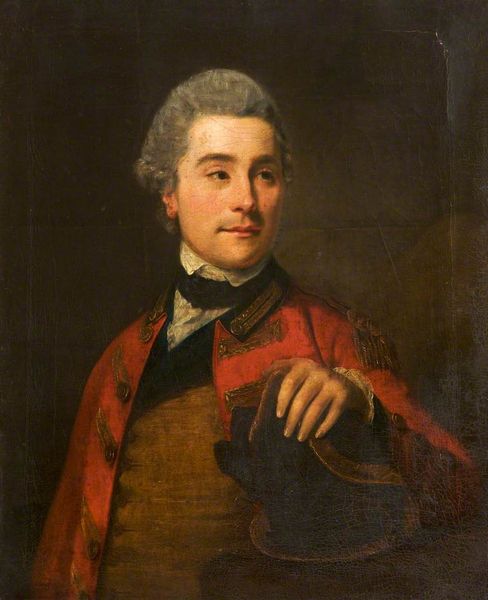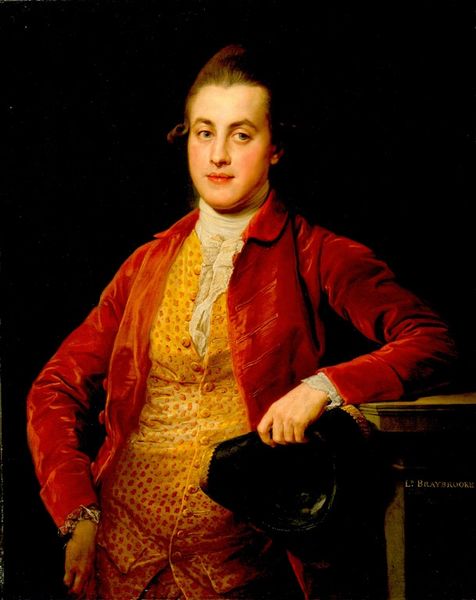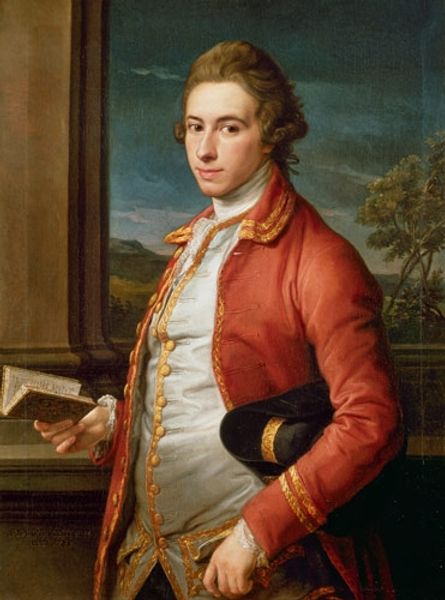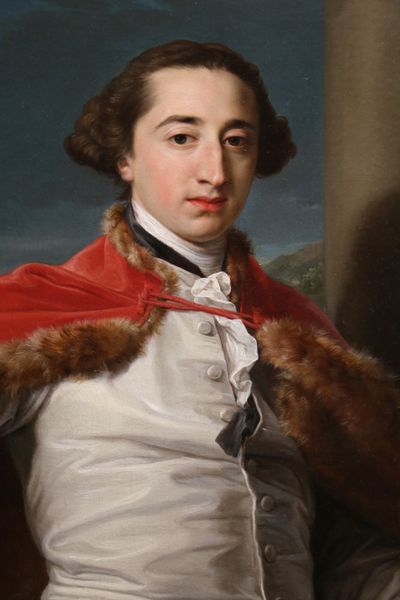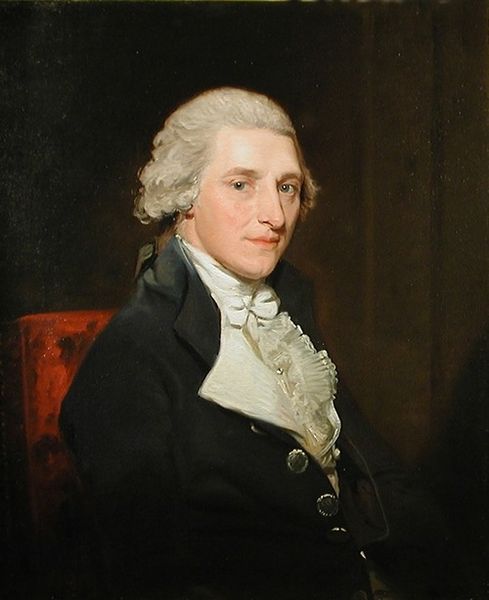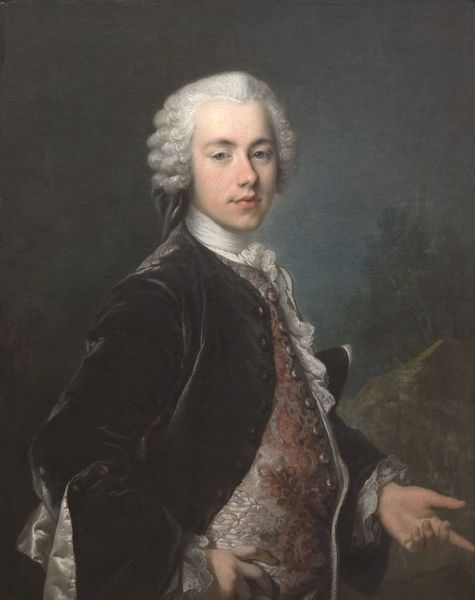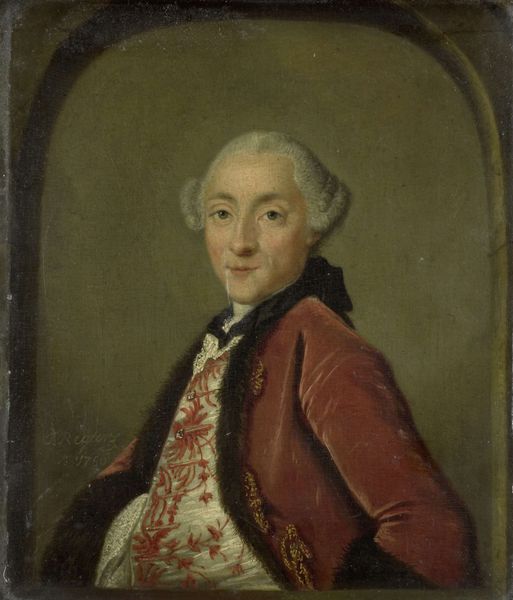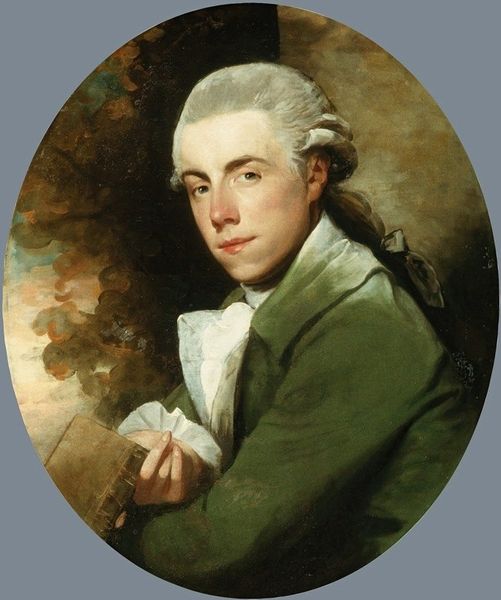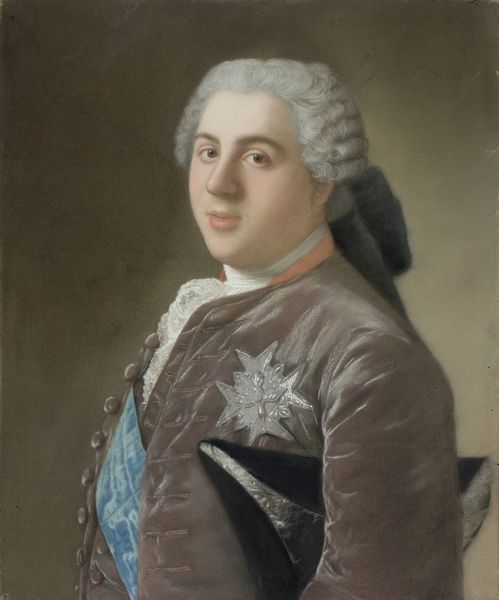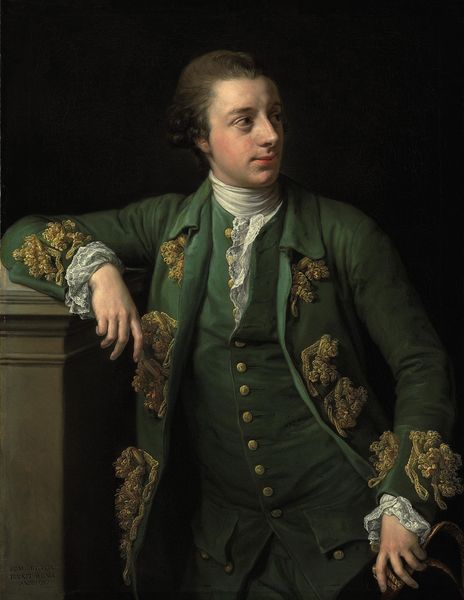
painting, oil-paint
#
portrait
#
baroque
#
painting
#
oil-paint
#
figuration
Copyright: Public domain
Curator: Here we have Pompeo Batoni’s “Portrait of William Legge, Second Earl of Dartmouth,” an oil painting completed in 1756. It's a fascinating example of 18th-century portraiture. Editor: Immediately, I'm struck by the luminosity – the almost dreamlike quality. It feels like he’s gazing towards a brighter future. Do you feel that? Curator: Indeed, Batoni certainly captured an idealized version of the sitter. If we look at the fabrics, you'll notice an extraordinary rendering of texture and light. The satins and velvets are meticulously depicted, revealing the prosperity and social standing associated with these materials at the time. It is important to think about labor in those times. Editor: Absolutely, and it's interesting how Batoni uses the almost theatrical composition—the pillar, the landscape backdrop—to convey that status. I wonder though if Dartmouth ever truly gazed off in contemplative bliss like this; that’s an interesting angle, almost artificial… what do you think of that compositional element, framing Dartmouth between a symbolic classical past and what might have felt as like boundless commercial potential in his time? Curator: A sharp point; I think this artifice serves a purpose. Batoni cleverly uses familiar symbols, not just to flatter his sitter but to embed him in a network of cultural and economic meanings understood by his contemporaries. This was a transaction and Dartmouth expected an appropriate display that justifies the material invested, and the same applies to us looking back from our perspective. Editor: Thinking about that consumerist perspective…it feels like an early form of marketing—like an Instagram portrait for the aristocracy! You have this alluring, highly stylized persona carefully constructed by the artist. But then it prompts so many questions. What was the dynamic during production, in that exchange? It’s always tempting to fill in the blanks, though we’re viewing history through these mediated snapshots. Curator: Precisely, it opens discussions about taste, value, labor, and societal constructs. It demonstrates not just wealth, but an access to power granted via artistic representations and its related system. The painting embodies layers upon layers of consumption from pigment creation to patron compensation. Editor: Well, looking closer has deepened my initial, intuitive read! So beyond initial charm, this has revealed hidden connections and ideas that still stir something in us centuries later. Curator: Agreed, and I think by acknowledging those material foundations, we appreciate these works on levels beyond just pure aesthetic value.
Comments
No comments
Be the first to comment and join the conversation on the ultimate creative platform.
